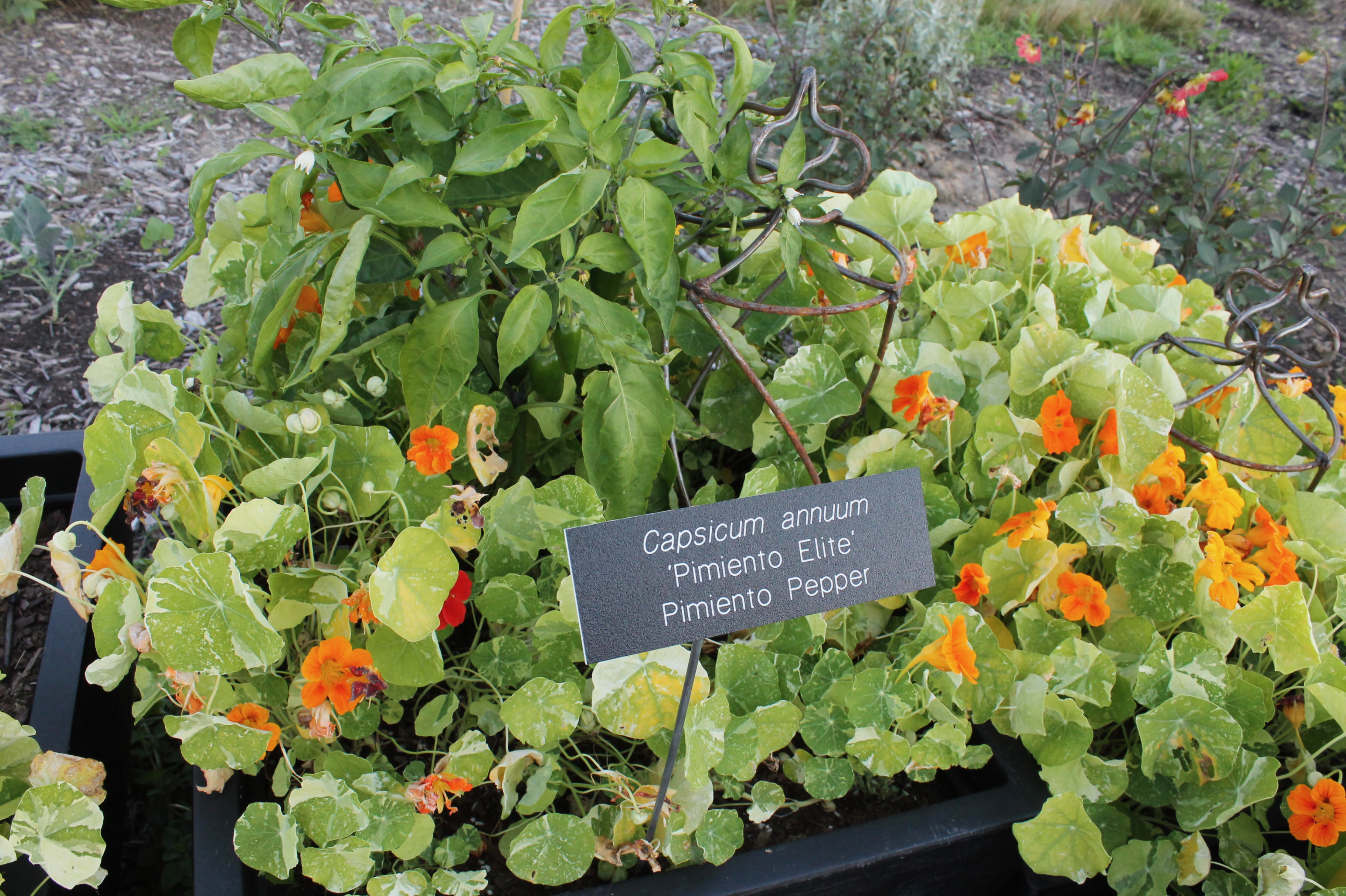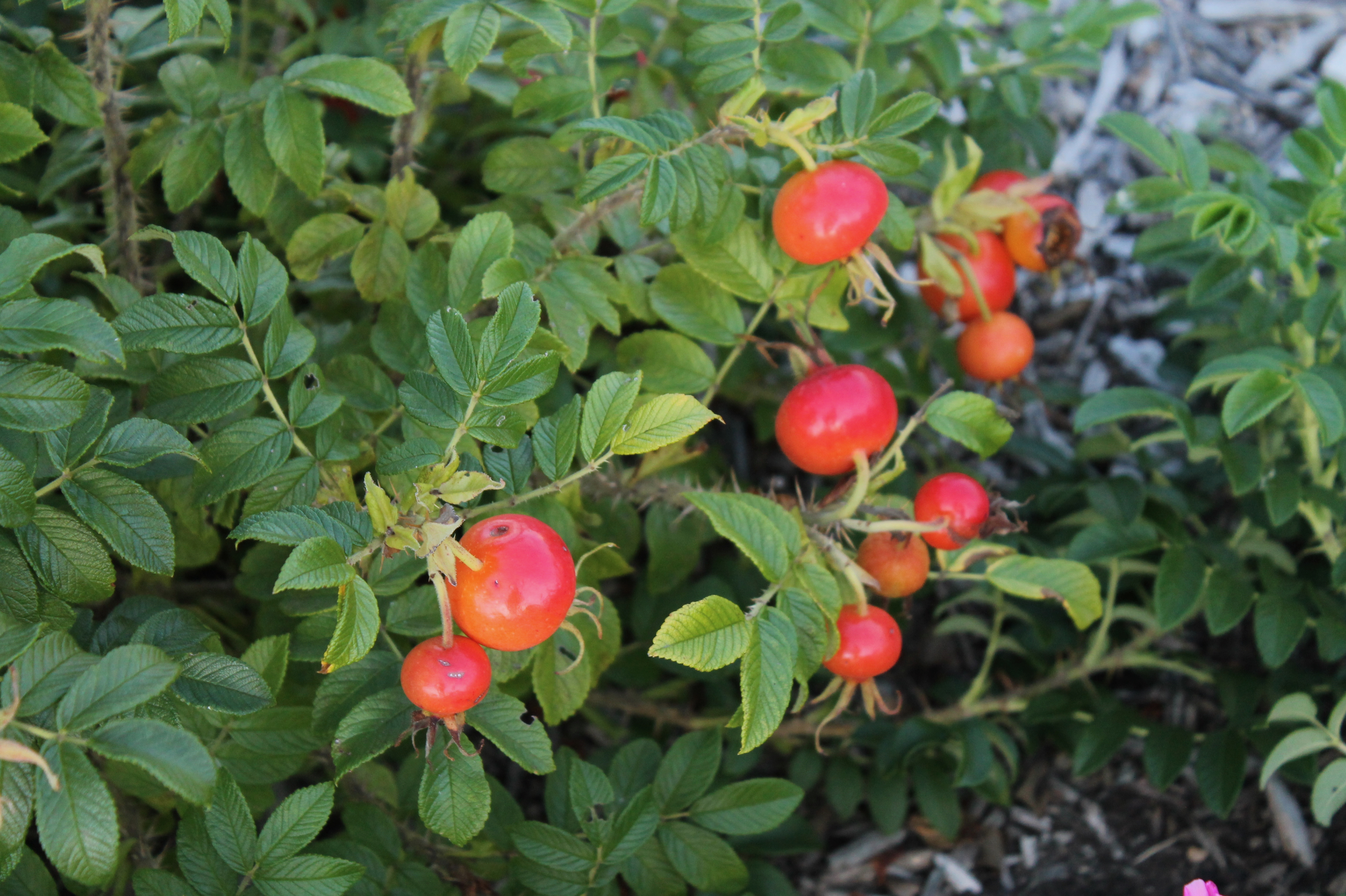
7 minute read
Foodscaping at the Arboretum
Want to blend a delicious mix of food and flowers in your home landscape? Whet your appetite with a visit to the Arb’s new Foodscape.
STORY AND PHOTOS JENNIFER RENSENBRINK
An edible front yard, traditional row-based vegetable gardens, a living grass patio and a flowering meadow. That’s what the University of Minnesota Landscape Arboretum is serving up with its new Foodscape project, a food-focused landscape bursting with annuals and perennials, most of them edible.

A new building, the Burton and Virginia Myers Education Center, houses adult education, the state’s master gardener program, the University of Minnesota Extension’s horticulture team and even a professional kitchen that doubles as a classroom.
The construction created a great opportunity for horticulture educators Julie Weisenhorn and Jon Trappe, who created the Foodscape with help from a team of master gardener volunteers, University of Minnesota students and Arboretum staff.
Weisenhorn, Trappe and new addition Laura Irish-Hanson are dedicated to experimentation in the Foodscape, from demonstrating answers to common questions, such as which vegetables can be grown in shade, to inspiring visitors to grow a diversity of plants they haven’t tried before in new and innovative ways.

“The goal of mixing the plants together based on texture, color and bloom time and trying to make all those things work together, it’s a big experiment,” says Weisenhorn. “To my knowledge, there are not a lot of foodscapes around. This is about the ornamental value of plants, having them be edible, and demonstrating sustainable design principles like unity.”

Practical meets beautiful
Some of the Foodscape growing techniques are very practical—for example, interplanting onions with rainbow chard, and basil with tomatoes. “We knew we would need lots of different kinds of basil for our classes,” said Weisenhorn. “Interplanting allowed us to grow more in this space, and it looks great. We also like the combination of foliage textures, plant forms and flowering.”
Other growing techniques demonstrate plants that Minnesotans might not even realize are possible to grow here, such as saffron (Crocus sativus). One of the most expensive spices in the world, saffron is a fall-blooming crocus that’s planted in summer when it is dormant. Flowers emerge mid to late fall and are harvested for their stigma. Because saffron requires good drainage, Weisenhorn and Irish-Hanson planted it in a raised, dry bed at the Foodscape this summer. “They like hot, dry conditions so we built the bed up, and now we’re waiting for them to grow. The flowers bloom before the leaves emerge,” said Irish-Hanson. Late fall rains usually trigger saffron to flower, so Weisenhorn and IrishHanson plan to start watering them frequently in late autumn if the weather doesn’t cooperate.

Will the experiment work? Weisenhorn admits that some of their experiments don’t always turn out, but it’s all part of the education process for both her team and Arboretum visitors.
The Foodscape also demonstrates season-extension techniques. They start the earliest spring vegetables under temporary greenhouse structures called hoop houses and succession plant quick-growing lettuces and other greens in raised beds by the entrance, where visitors can’t miss them.
Container plant combinations, such as hot peppers and nasturtium, are both beautiful and functional— nasturtium attracts pollinators which boosts pepper production. Cosmos, eggplant, low-growing roses and sweet alyssum grow together along the southern wall of the building, deterring garden pests while providing a continuous buffet of nectar and pollen for pollinators all summer.

A Living Grass Patio
Trappe devised the plan for growing a unique, living patio. The goal? To create an area for congregating that also provides the benefits of water infiltration and the cooling aspect of a lawn. He and Weisenhorn also anticipated high foot traffic. “We laid down a grid system of 2-foot by 2-foot plastic panels over the soil and seeded it with turf-type tall fescue,” Trappe says, adding that the grids help protect the grass plants’ crowns from heavy foot traffic and reduce soil compaction over time.
“The living grass patio is a beautiful, fine-textured mass planting that shows off other plants,” says Weisenhorn.
Classes bring it all together
Arboretum volunteer Nancy Vogt helps class participants make fried green tomatoes.
New this year, the Foodscape added a “Grow. Harvest. Eat.” class series to their education programming. Participants learn how to grow and harvest food plants from master gardeners. After the gardening lesson, Chef Beth Fisher and Arboretum volunteers teach students how to prepare meals from ingredients they harvested. Finally, everyone gets to savor and share in the delicious results. The classes change with the growing seasons, featuring seasonal dishes like salads to roasted garlic to ratatouille.
The Foodscape also incorporates flowering plants in many pockets to provide nectar and pollen for pollinators as well as beneficial insects like wasps and ladybugs that feed on aphids and other garden pests. Pollinatorfriendly flowers abound in the Foodscape, from milkweed and tithonia for monarchs to prairie dropseed, which supports several moth species, including the endangered Dakota skipper.
Many flowering plants here perform double duty— they’re both edible and attractive to beneficial insects. These include yarrow, nasturtium and borage, alongside more traditional flowering herbs like dill, fennel and cilantro.

A teaching opportunity
Operating a foodscape on a farm is not without challenges, but Weisenhorn, Trappe and Irish-Hanson also turn those into teaching opportunities. For example, many plants must be protected in cages from hungry deer and turkeys, but the cages themselves become educational fodder for Arboretum visitors. Trappe is also establishing turf plots to demonstrate various grasses that can be used in Minnesota as sustainable lawns requiring fewer inputs and less maintenance.
The Foodscape will be in its third full year in 2025, with many plants reaching maturity and the landscape plan coming together. Each season brings something new to see as edible plants are harvested, replaced and harvested again. Watch for added educational and volunteer opportunities on the arboretum’s website, arb.umn.edu.
Inspiring Fruits
The Foodscape shines a spotlight on unusual fruits. Hardy kiwis, honeyberries, chokeberries, buffalo berries and jostaberries grow alongside familiar favorites, such as strawberries, blueberries, pears and apples. Rose hips (photo above of Raspberry Rugostar® shrub rose) are harvested in late summer for jellies and syrups, dried for tea or simply left for a nutritious winter treat for birds. Even traditional fruits are grown in unexpected ways: Weisenhorn is currently experimenting with container blueberries and the best way to overwinter them.

RECIPE
Sweet Corn Relish
Adapted from Savoring The Seasons by Lucia Watson and Beth Dooley
8 cups corn, cut off the cob
2 cups green bell pepper, diced
2 cups red bell pepper, diced
2 cups celery, diced
2 cups yellow onion, diced
2 cups apple cider vinegar
1 cup sugar
1 tablespoon salt
1 tablespoon mustard seed
1 teaspoon turmeric
1 teaspoon white pepper
2 teaspoons celery seed
1. Place all ingredients into a 4-quart saucepan. Slowly bring mixture to a simmer and cook 15-30 minutes.
2. Spoon into sterilized hot jars and process for 15 minutes in a hot water bath, or place directly in the refrigerator for up to 1 month.



